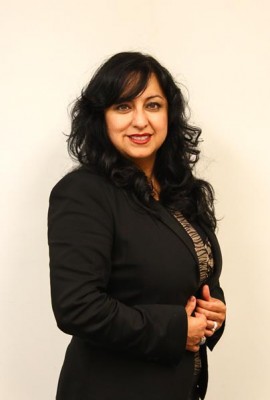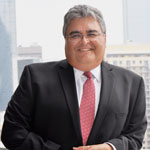
Growing up in Northwest Indiana, Sylvia Hevia knew Latinos as Mexicans and Puerto Ricans. That’s why she describes Chicago as “the United Nations” when it comes to her culture and the culture she shares with the countless Latinos and non-Latinos alike who benefit from the International Latino Cultural Center (ILCC). “Ever since I can remember hearing about ILCC in the late ’90s, I always wanted to work for it because no one else is doing anything like this,” Hevia says.
Since 1985, the center has been dedicated to promoting Latino culture and encouraging cross-cultural experiences among Latino communities and between Latinos and non-Latinos through performance arts including music, film, and theater. Representing more than 20 Latino nationalities, the center continues to extend its reach and collaborate with more diverse communities.
“Everyone is represented here,” says Hevia, director of development and marketing for the ILCC. By here, Hevia means Chicago, headquarters for the cultural center and the stage for the center’s annual Chicago Latino Film Festival (CLFF), which will celebrate its 30th anniversary next April.
Topping the list of the ILCC’s accomplishments this year is the $100,000 grant it received from the Joyce Foundation to expand its Latino Music Festival, which will take place again this fall in Chicago. Comprised of 20 to 25 concerts, most of which are free, the festival showcases artists with diverse styles with an emphasis on classical Latin American and Spanish music.
The center was also recognized by the Academy of Motion Picture Arts and Sciences with a $30,000 grant to support community outreach, student matinees, and director Q&A sessions at the CLFF. In 2013, the festival drew directors from Spain, Portugal, and multiple countries in Latin America. To supplement the finances, Hevia says the center will reach out to the consulates of Argentina, Brazil, Chile, and Venezuela.
Next, the center hopes to secure funding and a space to construct a “mega cultural center” in Chicago. “That’s our ultimate goal,” Hevia says. “We’re working long-term to develop a three- to five-year plan.” The space would be a facility where people could enjoy the Latino culture in the forms traditionally endorsed by the center, as well as a location for community events and performance by Latino music, dance, and theatre groups.
“Even though economic times have been hard here, we’re thriving by getting really creative with partnerships,” Hevia says. This year the Lyric Opera House and Chicago’s Jewish community joined forces with the ILCC in what may have been previously unexpected partnerships, but proved mutually beneficial. “Promoting Latino culture is an entry point,” Hevia says. “It’s the best way to understand who we are. Our culture is to share, so to promote it is natural for us.”
The CLFF found inroads to the Jewish, aging, and LGBTQ communities in feature films whose subjects highlighted shared culture among the communities or spotlighted issues of importance to each, such as the Life Re-Imagined film series, which included films that encouraged 50-and-older viewers to reinvent themselves.
The ILCC’s 30th Anniversary Gala this November marks the start of a six-month celebration, culminating in the film festival next spring. An extension of the festival, the Reel Film Club continues to provide programming each month. Films from past festivals are screened, and a cultural experience designed around the film’s country of origin is created.
Summers in Chicago usher in the Film in the Parks series, a lineup of eight family-friendly Latino films shows free of charge in partnership with the Chicago Parks Department. For Hevia, Film in the Parks holds a special significance. When she has the chance to get out from behind the scenes and participate in the center’s events, she’s caught herself standing in awe in the middle of programming. What she’s seen is a testament to the experiences the center provides.
“Last summer when we did Film in the Parks,” she recalls, “I got to see families coming as a whole. It was just amazing because of the connection they were having among themselves and then as a community. We’re providing an opportunity they would have never had before. It brings me back to Indiana where we never had anything like this. The children of these families will have memories growing up, and how beautiful that will be.”

